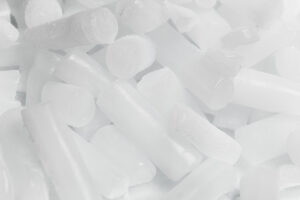The Environmental Impact of Dry Ice: Is It Eco-Friendly?

What is the overall environmental impact of dry ice?
As industries and consumers alike grow more environmentally conscious, understanding the environmental impact of dry ice is more important than ever. Dry ice, the solid form of carbon dioxide (CO₂), is widely used for shipping perishables, cleaning industrial equipment, creating fog effects, and more. But is it truly eco-friendly? Let’s break down how dry ice is made, used, and disposed of to determine its sustainability profile.
What Is Dry Ice?
Dry ice is simply carbon dioxide in solid form, maintained at a temperature of -78.5°C (-109.3°F). Unlike water ice, dry ice doesn’t melt into a liquid; instead, it sublimates directly into a gas, making it an effective and residue-free cooling agent. This unique characteristic makes it ideal for industries ranging from food delivery to pharmaceutical logistics.
How Is Dry Ice Made?
To fully assess the environmental impact of dry ice, it’s essential to understand its production process. Dry ice is typically manufactured from reclaimed carbon dioxide—a byproduct of industrial processes such as ammonia or ethanol production. This means that no additional CO₂ is generated solely for the purpose of making dry ice; instead, existing CO₂ is captured and repurposed.
This reclamation process actually gives dry ice a more sustainable edge, as it recycles carbon dioxide that would otherwise be released into the atmosphere.
The Environmental Pros of Dry Ice
No Harmful Residue
One of the most significant environmental advantages of dry ice is that it leaves no toxic residue behind. As it sublimates, it simply returns to its gaseous form and disperses into the atmosphere, where it becomes part of the natural carbon cycle.
Reduces Water Waste
Unlike traditional ice, dry ice doesn’t create any meltwater, which can help reduce water usage and prevent microbial growth in applications like food storage.
Reclaimed Carbon Dioxide
As mentioned, dry ice is made from recovered CO₂, meaning it does not contribute additional greenhouse gases to the atmosphere. In fact, using captured CO₂ helps industries offset emissions by utilizing existing waste.
Effective in Cold Chain Logistics
In industries like medical shipping, where maintaining a constant low temperature is crucial, dry ice helps reduce spoilage and waste—an indirect but significant environmental benefit.
Potential Environmental Concerns
CO₂ Emissions During Sublimation
Although dry ice is made from reclaimed carbon dioxide, it eventually releases that CO₂ back into the air. While this doesn’t add new CO₂ to the environment, it doesn’t reduce existing levels either. In large quantities, especially in poorly ventilated areas, dry ice sublimation can present health and safety risks.
Energy Use in Production and Transport
Creating and storing dry ice requires energy, often from non-renewable sources. The energy used to compress and refrigerate CO₂ contributes indirectly to its overall carbon footprint, although it is still often lower than other refrigeration methods.
Is Dry Ice Eco-Friendly?
When considering the environmental impact of dry ice, the answer largely depends on how it’s produced and used. Compared to alternatives, dry ice has several eco-friendly advantages:
- It’s made from reclaimed CO₂.
- It doesn’t produce secondary waste or require water.
- It’s effective and efficient in preserving perishables, which reduces food and medical waste.
However, energy consumption and eventual CO₂ release must be factored into the equation. Overall, dry ice can be considered a relatively eco-friendly option, especially when used responsibly and in situations where no better alternatives exist.
Tips for Using Dry Ice Sustainably
To minimize the environmental impact of dry ice, consider the following best practices:
- Use only what you need. Overuse leads to unnecessary CO₂ release.
- Ensure proper ventilation. This keeps sublimated CO₂ from becoming a safety hazard.
- Source responsibly. Work with manufacturers that prioritize energy-efficient production methods.
- Combine with renewable energy practices. If your company uses dry ice extensively, offset its environmental impact by investing in renewable energy or carbon offsets.
Dry Ice For All Your Needs
Dry Ice Corp is the largest regional supplier of dry ice and related products in the Northeastern United States. Our ice is fresh and delivered right to your doorstep. We are happy to help you determine the best way to ship your goods, whether you have a huge amount of cookies or a single pie, and help you select the perfect amount of dry ice for the job. Give us a call at (201) 767-3200 or contact us online for a quote. To connect with us online, be sure to follow us on Facebook, Pinterest, and Twitter.



